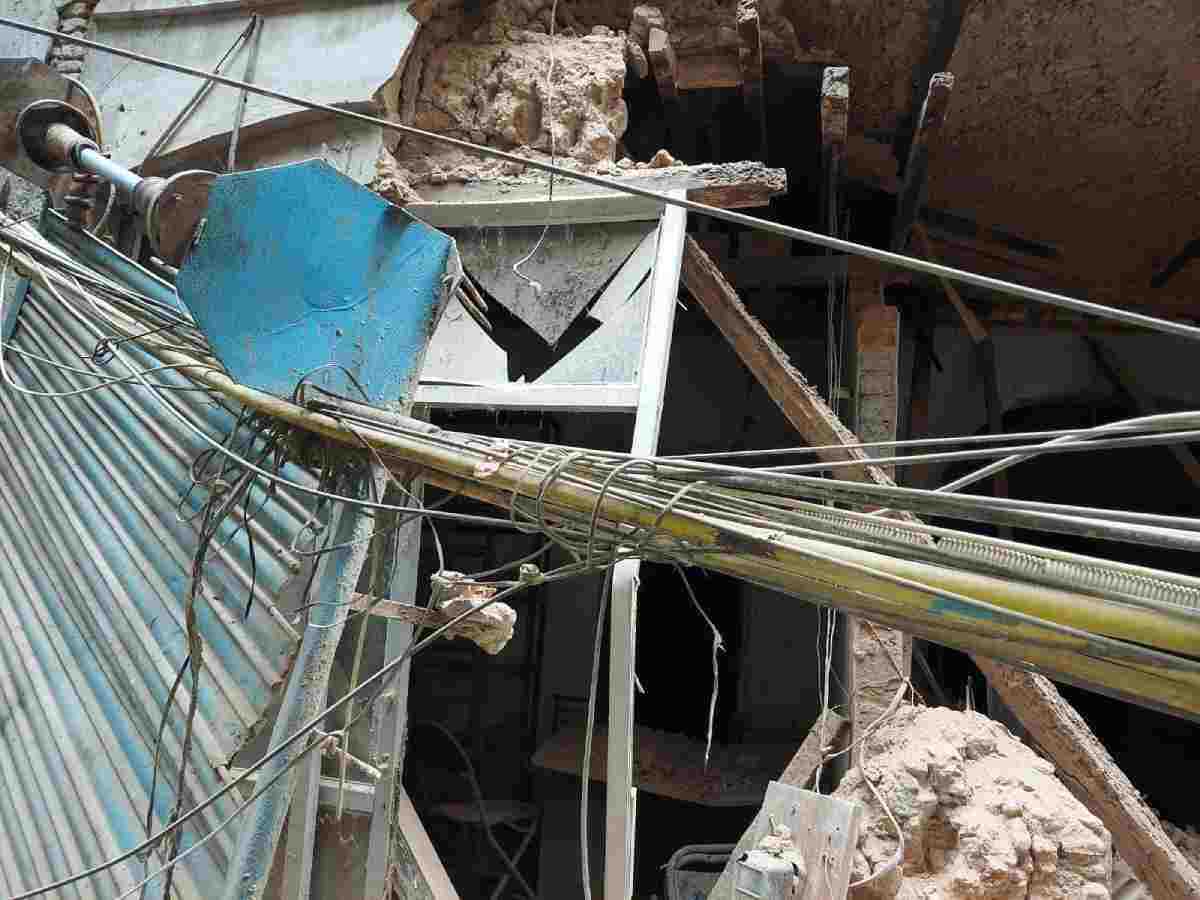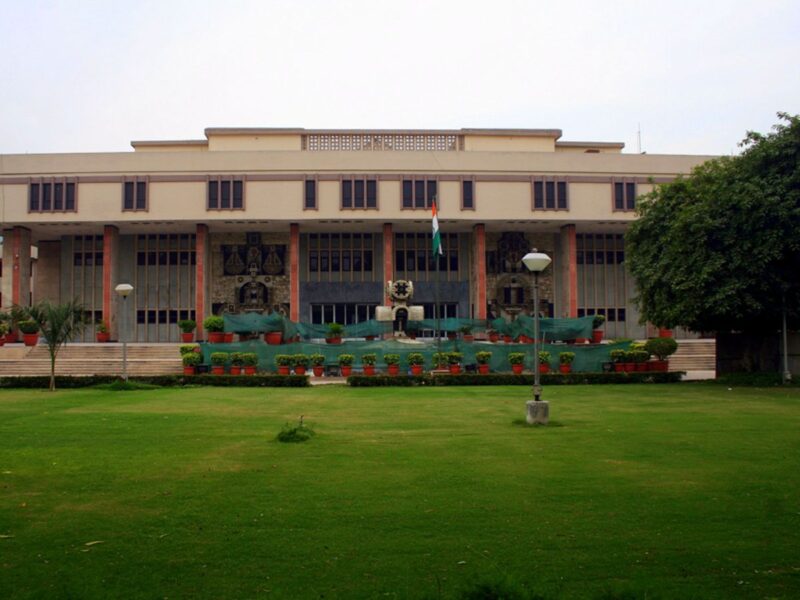The Municipal Corporation of Delhi (MCD) appears to be playing down incidents of building collapse that have struck the Capital in recent times.
According to data available with Patriot, the MCD reported that 10 properties collapsed between 2023 and 2024. However, information obtained from the Delhi Fire Services (DFS) indicates that there were 226 calls made for building collapse between April 1 and August 12, which clearly indicates a difference in estimations.
An astounding 350 calls for such accidents were received between 2023 and 2024.
However, the MCD is stringent in wanting to sweep the matter under the rug as its survey of dangerous buildings remains incomplete.
The survey is always meant to be completed by the beginning of the monsoon season to mitigate any chance of a building collapsing during the rains. However, even a month after the onset of the first spell of rain on June 28, the survey remains incomplete.
The deadline is being extended constantly. The initial deadline that the civic authority had put in place was June 14. It was then pushed to July 15. Over a month has passed since then.
MCD officials say they have noted only 67 structures which are in danger of falling apart.
Norms suggest that the civic authority should send repair notices to building owners whose properties are at risk of crumbling apart. If the repairs are not completed within the stipulated period of time, the MCD proceeds to demolish the site to ensure that no loss is caused in its wake.
Why MCD has not demolished the houses
A senior MCD official highlighted that the buildings which are at the risk of collapsing do not comprise all that they have sent repair notices to.
“We have sent almost 500 repair notices to multiple buildings in Delhi. Many of them are based in old Delhi and we have asked the owners to get their premises repaired but most of them are not concerned about it. Most do not have the money to pay for the repairs, and they keep pleading with us to not break their houses. Other landlords ask us to demolish their properties in the area because they have been put for rent and the tenants refuse to leave while paying rents as low as Rs 50,” he said.
It is because of the civic authority’s unwillingness to demolish houses that many of them have collapsed leading to casualties as well.
According to the DFS, there were 15 deaths due to collapse of buildings in 2024, while in 2023, there were 23 deaths and in 2022 there were 43 deaths. On the other hand, 112 injured have been recorded in 2024 (to date), while in 2023, there were 171 injured. The number has reduced consistently from a peak of 315 injured in 2022.
The civic authority has not updated on the number of buildings which have been surveyed till date. As of July 4, the MCD has finished the survey of only the South Zone. However, to ensure that the buildings do not collapse further, the Delhi Disaster Management Authority (DDMA) has ensured to formulate a plan according to the requirements of each district in the national capital.
Also read: Dwarka, North East Delhi most prone to electrocution deaths: Data
How DDMA’s plan fares
The buildings in all the districts are effectively under strain owing to the national capital falling under Seismic Zone IV, which makes it susceptible to earthquakes. Thus high-rises, densely-packed residences, unauthorised colonies and old houses run the risk of toppling over any time.
Concerns are raised regarding the condition of the buildings especially during monsoon.
“The cement becomes loose during rainfall and this eventually leads to the buildings collapsing. It is mostly seen in older buildings or properties where sub-par material has been used. If it is the latter, it does not matter if the building is a few months old or a couple of years old. It is very unpredictable and can collapse at any time,” said an MCD official from the building department.
State of buildings in susceptible areas
According to the DDMA, buildings in North, Central and East Delhi districts are most susceptible to collapse. The districts of North and Central Delhi contain major chunks of old Delhi, or the Chandni Chowk area. The area contains multiple buildings which have seen the Mughal era, the British period and independent India of this day. These buildings, however historic, have not been repaired in the longest time.
Multiple buildings with similar descriptions and physical attributes litter the extent of what comprised Delhi’s glorious past. However, the former glory is now lost among the many alleys which hide within themselves the multiple deceased who lost their lives because of a stray building falling on them and because the civic authorities could not do their jobs.
Buildings with moth-worn cement, partially broken foundation pillars and loose bricks jutting out from the terrace’s railings, grace one’s sight as one looks around.
The area around Farash Khana grabbed headlines as a building collapsed there on October 9, 2022. The collapse led to the death of at least three people while injuring nine.
The residents said that they had asked the MCD to demolish the entire building. However, the MCD did not heed their warning. In the past week another portion of that building collapsed. However, no casualty was reported.
“Normally, the entire area is packed with people out to buy groceries or market for things they need at home. That day when the portion of the house collapsed, it was unusually empty which helped in keeping the casualties to none. However, there is a major traffic disruption now because the road is blocked off as the portion of the building fell on the road itself,” said Safina, a resident.
Recent accidents and deaths
Multiple instances of building collapse have taken place throughout the year. The collapse of a two-storey building in Model Town recently led to the death of a 23-year-old labourer and injured three others. On the other hand, a man and a woman lost their lives when the roof of a dilapidated house in Prem Nagar, Ward 38, collapsed.
On August 2, two more such incidents added to the growing toll. A school wall in Daryaganj came crashing down, damaging several parked vehicles, while a two-storey building in Jahangirpuri collapsed, claiming three lives. Just days earlier, on July 31, heavy rains triggered a building collapse in North Delhi’s Sabzi Mandi area, killing one person. The very next day, another building in the same area suffered a similar fate.
The series of incidents did not stop there. On August 1, collapse of two separate buildings were reported — one in Defence Colony and another in Shastri Park — leaving three people injured.
Also read: Delhi: Clogged city drains leave the Capital flooded
These near-weekly incidents highlight the danger posed by unstable structures across the city. Despite the mounting casualties and damage, MCD’s response has been widely criticised as indifferent and inadequate.
Suffice to say, the civic authority is complicit, especially when it has the authority to curb such incidents.
Compounding the crisis, the civic body has also come under fire for failing to prepare adequately for the monsoon season, leading to widespread waterlogging across Delhi.
According to MCD data, the civic body has to complete the survey of 28,84,164 buildings.
In 2023, the civic authority had noted 57 unsafe properties in Delhi.





